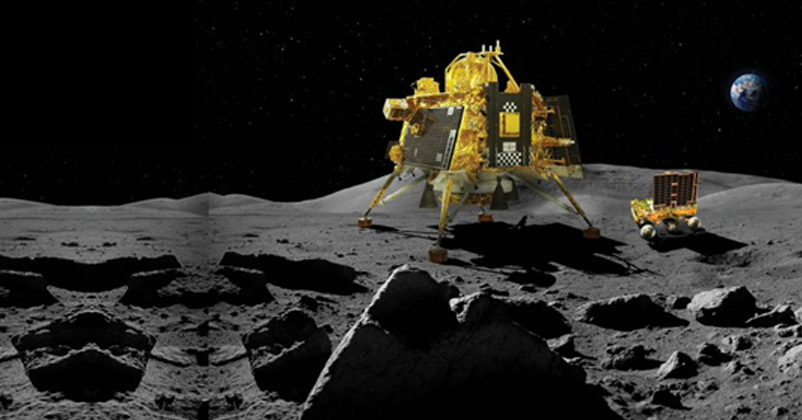With the 615 crore 'Chandrayaan-3’ cost, is space exploration worth it
| 23-Aug-2023 |

Rs 615 crore is the cost ISRO has spent to launch Chandrayaan-3 mission on July 14,2023. The total cost of making Chandrayaan-3’s lander Vikram, rover Pragyan and propulsion module is Rs 250 crore. Also, Rs 365 crore was spent on it’s launch. Chandrayaan-3 is said to be one of the most cost effective space missions as compared to it’s predecessors.
If compare with Chandrayaan-2’s total landing cost (Rs 978 crore), which was sent in year 2019, it’s 30 percent less and Rs 368 crore was the cost of Chandrayaan-1 which was sent in 2008.
Chandrayaan-3 is expected to make a soft landing on the lunar surface on Wednesday, August 23, 2023 at 18:04 Hrs; this first soft-landing attempt will be made on the Moon's south pole region. The soft landing is a tricky issue as it involves a series of complex manoeuvres consisting of rough and fine braking.
The soft landing is being attempted days after Russia’s Luna-25 spacecraft crashed into the moon after spinning out of control whose project cost was 1600 plus crores.
It is a follow-up mission to Chandrayaan 2 that aims to demonstrate India's end-to-end capability in safe-landing and roving on the moon's surface.
India will create history by becoming first country of the world to land on the South pole of Moon if it successfully lands. Uptil now, only three countries USA, Russia and China have landed on the Moon but they also couldn’t land on the South Pole. Landing on this part of Moon is considered the toughest due to it’s rough surfaces and deep trenches.
Recently Russia’s Luna 25 tried to land on the South Pole but crashed. Israel and Japan have also attempted to land on this part of Moon but they also met with the same fate as Russia.
The live telecast of the Chandrayaan-3 landing will be available on DD National TV channel. ISRO will live stream the event on its website, its YouTube channel and Facebook.
How does space exploration help humans
As per a report by Economic Times,
space exploration has led to a large number of technological innovations which have improved daily life. Apart from the industrial use of innovation in space technology, you can find space technology in items of daily use too. For example, since astronauts have to survive cosmic radiation and extreme temperatures in space, NASA identified an organism which is now improving sunscreens and anti-aging products. Spinoff technologies from space research are of vital use in making of various objects of daily use, from smartphones to water purifiers.
ISRO's space programmes have spun off several technologies which are used for the benefit of general population. Chief uses of ISRO technologies have been innovations in the fields of surgery, artificial limbs, food safety, weather prediction, communication, robotics, geology, heat- and fire-proofing, adhesives, aviation, defence, etc.
From time to time, ISRO offers technology transfer to private industry, public sector, research organisations and academic institutions. ISRO's determination to land a rover on moon safely with Chandrayaan-3 has been marked by many technological innovations which may find their way to other fields.
Moreover, space innovation is the furthermost tech frontier and leadership in space innovation often translates into leadership in other technological fields. Space missions also prepare valuable pools of scientists, and inspire a large number of youth to study technology, something which is vital for a country to achieve overall technological excellence.